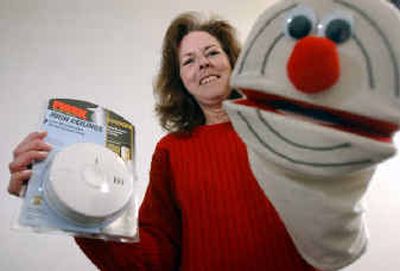Causes with flaws

ALBANY, N.Y. — Diana Mey remembers the telemarketing call for a charity that pushed her “over the edge.”
“I remember getting a hard sell,” said the mother of three from Wheeling, W.Va. “A telemarketer told me, ‘C’mon, can’t you spare $20? How about $10? These people are really counting on you.’ “
So was the telemarketer’s professional fund-raising company, which would have netted $16 of a $20 donation.
In the competition for Americans’ disposable income, charities including police benevolent associations, veterans’ groups and those combatting diseases often find it best to hire professional fund-raisers. Despite years of negative reports, media stories detailing the fraction of funds that actually go to a charity and national warnings from consumer advocates, little has changed in the decade since the practice became more widespread, state officials said.
In New York last year, 592 charity campaigns used professional fund-raisers to raise $187 million, of which one-third — $63 million — was kept by the nonprofit groups, according to the annual “Pennies for Charity” report released by New York Attorney General Eliot Spitzer.
“We don’t expect 100 percent to go to the charity, but we would hope that over time it would be more than the 33 percent we’re seeing,” Spitzer said.
In New York, All-Pro Telemarketing Associates Corp., a professional fund-raiser based in New Jersey, raised $4.1 million in 2003 for 15 charities to help disabled children, disabled police officers, children with leukemia and a program that helps find missing children. Thirteen percent — $533,000 — went to the charities, Spitzer’s report said.
In California, the average charity using professional fund-raisers kept less than 40 percent of the donations and a quarter of the groups ended up with 15 percent or less, Attorney General Bill Lockyer reported last year.
Michelle Destino-Moran knows both sides. She is president of The National SAFE Home Foundation, a New York-based charity that provides smoke alarms to families with newborns, school children, the disabled and senior citizens in 43 states.
It was the $1,000 a week in donations from telemarketers that turned her idea into a nationwide program. But the telemarketers — who returned 13 percent of what they raised — were investigated by law enforcement agencies for their tactics and SAFE dropped them in 2000. That almost sank the charity.
Mark Gelvan of All-Pro Telemarketing Associates, the New Jersey fund-raiser that gave up its New York license to settle a Spitzer investigation in 2003, said there are reasons for the big cuts: When a telemarketer collects 80 percent of the donation, “a good 70-plus percent could be expenses” including rent, the phone bill and mailing materials to donors.